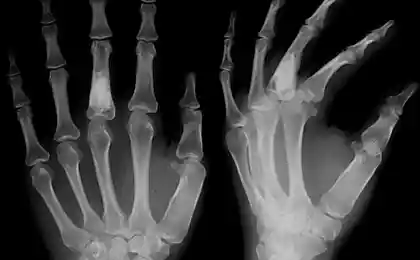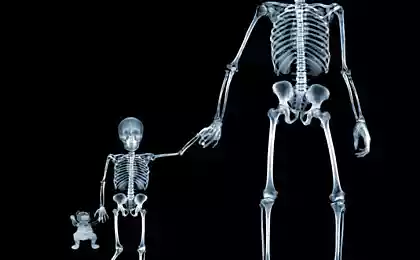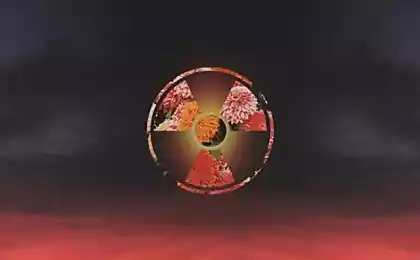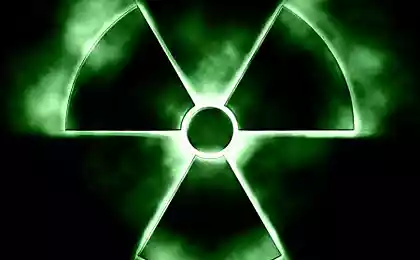468
What should be the normal background radiation and why there is no fear of medical x-ray
Forty one million ninety five thousand two hundred eighty
Man lives in a world where there are many objects emitting in one way or another radiation. It can be natural or man-made. Not all radiation can be hazardous to health. It is enough to know the annual rate and the sources of radiation to protect themselves from its effects.
Natural sources of radiation
The main source of natural origin is radon gas, which is present in large quantities in the Earth's atmosphere. This gas, its products of half-lives and isotopes are suppliers of radiation dose that has to breathe man. In normal circumstances the thus obtained volume during the year of natural exposure the average is 1260 µsv. In Russia the background radiation exceeds the average world indicators, and natural radiation is 1980 microsieverts.
The radon gas is distributed unevenly across the territory, and its concentration in certain areas depends on a number of factors. Radiation gas in a more concentrated form contains where radioactive uranium lies closest to the surface of the earth. The decay products emit radiation that enters the earth's atmosphere through the rocks, groundwater and even through the foundations of buildings constructed on such plots of land.
The person gets exposure in such situations, breathing air. The radon enters the body through the lungs, and radiation elements for a long time remain in the human body. There are special zones on Earth, where scientists record a very high concentration of natural background radiation, and where people are dangerous to be even for a limited period of time. This region, located on the territory of the United States, Scandinavia, the Czech Republic and Iran, are in the vicinity of mountain ranges. In such places the natural radiation in the air exceeds the standard by more than 500 times.
Radioactive substances emit planets and stars in the Galaxy. The closest star, emitting radiation in our solar system is a star, the Sun. Part of the cosmic radioactive radiation is trapped by earth's atmosphere, and a part percolates through it. The closer one is to the open space, the more radiation he is exposed to. It refers to people, often flying on airplanes.
Land is also a natural source. Radiation background formed in mountain massifs, where there are uranium deposits and deposits of other radioactive minerals. The highest background radiation of terrestrial origin found in the mountainous regions of India and Brazil.
A person can also obtain the natural radiation dose with food. Its source is a radioactive carbon isotope of potassium and other isotopes, which may contain in its composition products. Animals and plants, like all living organisms also accumulate natural radiation, which then along with the food gets to people.
Man-made sources of radiation
Very often people receive exposures from medical procedures. Its level depends on the quality of medical equipment and the nature of the therapeutic, diagnostic or other procedures of a medical nature.
One of the most common examples of such man-made radiation is x-rays, which penetrate through different organs of the human body. Statistics show that the greater the level of background radiation in such cases it is necessary to Americans. In Russia it is much lower.
Source of manmade radiation are many consumer products, particularly cigarettes contain radioactive polonium. A great influence on the General background radiation is the production of nuclear weapons. Held in the 20th century in the period from 1940 to the 1960s, testing of nuclear weapons led to a significant increase in radiation worldwide.
Another dangerous source of anthropogenic nature, which appeared in the 20th century, have become a nuclear power plant. Emissions during emergency stops occurred not so often, but they, like Chernobyl or Japan's Fukushima, could significantly affect the radiation environment around the world. Living in areas of disaster people got a shock dose of radiation.
In the 20th century there were accidents and military nuclear facilities, resulting in leakage of heavy water, as it was in Kyshtym in Russia or Windscale in the us.
In addition to that, a person can be exposed to additional radiation in the workplace if he works in the area of special industrial enterprises that use nuclear energy and live in the vicinity of TPP, NPP, and other large objects, running on carbon fuels, which can be a source of background radiation.
Safe level of medical radiation exposure
Science has proven that during the time can without any harm to their health to tolerate exposure to 10 microsieverts, although is considered to be safe dose to 0.5 mSv received in one hour. Elevated levels of radiation should not exceed 72 hours within one month. So flying on planes can not bring much harm, as most so often do not use them.
The same safe is the dose received from medical x-rays. The average person has no more than two times a month to take an x-ray examination. Therefore, this level can be dangerous. Modern x-ray equipment provides increased protection from radiation. Besides, by using special drugs to rid the body of accumulated radioactive material. Spaces with high natural background radiation it is recommended to frequently ventilate.published
Source: zeleneet.com
Man lives in a world where there are many objects emitting in one way or another radiation. It can be natural or man-made. Not all radiation can be hazardous to health. It is enough to know the annual rate and the sources of radiation to protect themselves from its effects.
Natural sources of radiation
The main source of natural origin is radon gas, which is present in large quantities in the Earth's atmosphere. This gas, its products of half-lives and isotopes are suppliers of radiation dose that has to breathe man. In normal circumstances the thus obtained volume during the year of natural exposure the average is 1260 µsv. In Russia the background radiation exceeds the average world indicators, and natural radiation is 1980 microsieverts.
The radon gas is distributed unevenly across the territory, and its concentration in certain areas depends on a number of factors. Radiation gas in a more concentrated form contains where radioactive uranium lies closest to the surface of the earth. The decay products emit radiation that enters the earth's atmosphere through the rocks, groundwater and even through the foundations of buildings constructed on such plots of land.
The person gets exposure in such situations, breathing air. The radon enters the body through the lungs, and radiation elements for a long time remain in the human body. There are special zones on Earth, where scientists record a very high concentration of natural background radiation, and where people are dangerous to be even for a limited period of time. This region, located on the territory of the United States, Scandinavia, the Czech Republic and Iran, are in the vicinity of mountain ranges. In such places the natural radiation in the air exceeds the standard by more than 500 times.
Radioactive substances emit planets and stars in the Galaxy. The closest star, emitting radiation in our solar system is a star, the Sun. Part of the cosmic radioactive radiation is trapped by earth's atmosphere, and a part percolates through it. The closer one is to the open space, the more radiation he is exposed to. It refers to people, often flying on airplanes.
Land is also a natural source. Radiation background formed in mountain massifs, where there are uranium deposits and deposits of other radioactive minerals. The highest background radiation of terrestrial origin found in the mountainous regions of India and Brazil.
A person can also obtain the natural radiation dose with food. Its source is a radioactive carbon isotope of potassium and other isotopes, which may contain in its composition products. Animals and plants, like all living organisms also accumulate natural radiation, which then along with the food gets to people.
Man-made sources of radiation
Very often people receive exposures from medical procedures. Its level depends on the quality of medical equipment and the nature of the therapeutic, diagnostic or other procedures of a medical nature.
One of the most common examples of such man-made radiation is x-rays, which penetrate through different organs of the human body. Statistics show that the greater the level of background radiation in such cases it is necessary to Americans. In Russia it is much lower.
Source of manmade radiation are many consumer products, particularly cigarettes contain radioactive polonium. A great influence on the General background radiation is the production of nuclear weapons. Held in the 20th century in the period from 1940 to the 1960s, testing of nuclear weapons led to a significant increase in radiation worldwide.
Another dangerous source of anthropogenic nature, which appeared in the 20th century, have become a nuclear power plant. Emissions during emergency stops occurred not so often, but they, like Chernobyl or Japan's Fukushima, could significantly affect the radiation environment around the world. Living in areas of disaster people got a shock dose of radiation.
In the 20th century there were accidents and military nuclear facilities, resulting in leakage of heavy water, as it was in Kyshtym in Russia or Windscale in the us.
In addition to that, a person can be exposed to additional radiation in the workplace if he works in the area of special industrial enterprises that use nuclear energy and live in the vicinity of TPP, NPP, and other large objects, running on carbon fuels, which can be a source of background radiation.
Safe level of medical radiation exposure
Science has proven that during the time can without any harm to their health to tolerate exposure to 10 microsieverts, although is considered to be safe dose to 0.5 mSv received in one hour. Elevated levels of radiation should not exceed 72 hours within one month. So flying on planes can not bring much harm, as most so often do not use them.
The same safe is the dose received from medical x-rays. The average person has no more than two times a month to take an x-ray examination. Therefore, this level can be dangerous. Modern x-ray equipment provides increased protection from radiation. Besides, by using special drugs to rid the body of accumulated radioactive material. Spaces with high natural background radiation it is recommended to frequently ventilate.published
Source: zeleneet.com























